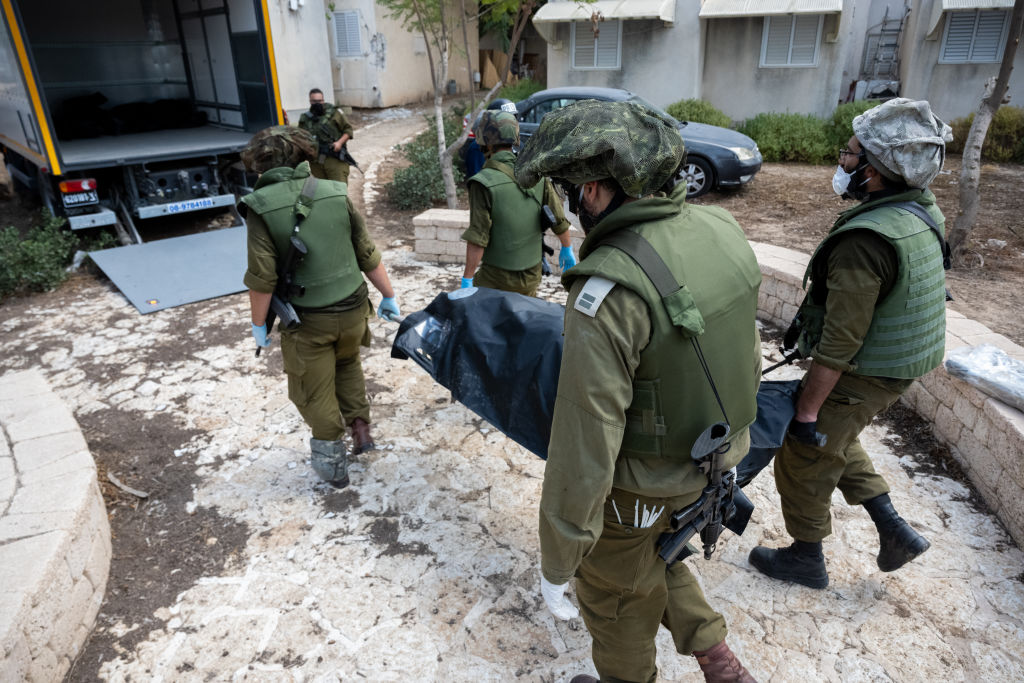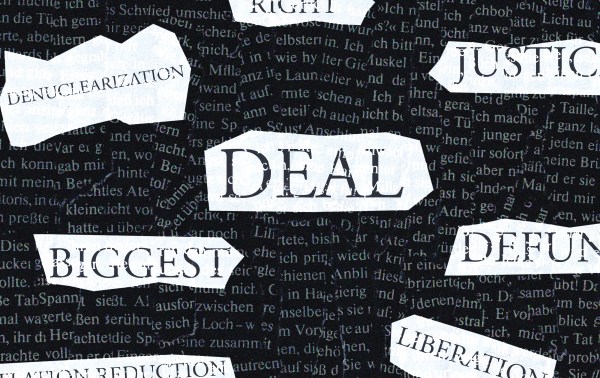Michal Uziyahu calls herself one of the lucky ones. When Hamas’ terrorists fanned out for their attacks into Israel Saturday, some communities were able to fight back. Hers was one of them.
The 46-year-old mother of three lives with her husband in Ein HaBesor—a cooperative farming community known as a moshav—in southern Israel, about 9 miles from the Gaza Strip.
At 6:30 a.m. Saturday, they awoke to massive explosions and ran for the shelters built for such attacks. “Since we live on the troubled border, we always had emergencies,” she told The Dispatch in a phone interview. “You know, rockets here and rockets there.” But Saturday’s attack was something else entirely.
First responders and residents from the moshav barricaded its gates and armed themselves with handguns, and for more than 24 hours staved off perhaps more than 10 armed terrorists by themselves. “Saturday, we went through a massacre. They slaughtered us. They didn’t go there to attack soldiers. They slaughtered children and women and men,” she said, her voice breaking. “You know, for us, this is the worst of our worst nightmares.”
The terrorist attacks occurred on the Jewish holiday of Simchat Torah, which this year fell on Shabbat (the Sabbath). The attack came on multiple fronts, with thousands of rockets cleaving the air, while bulldozers tore down security fencing. Estimates indicate 1,000 armed Hamas militants, members of the Islamic group in control of Gaza, breached the border, some using motorized paragliders to get into the country. For hours as warning sirens wailed, Hamas members massacred the communities dotting Israel’s southern border largely undeterred. Help was slow to arrive, as Israeli Defense Forces (IDF) were seemingly caught unaware.
“It is something that’s so hard to wrap your head around, but the reality that those communities woke up to, that was a false sense of security,” Enia Krivine, senior director of Foundation for Defense of Democracies’s Israel Program, told The Dispatch. “It was false. It’s been shattered.”
That false sense of security for these small communities in southern Israel was still intact just weeks ago.
A bit over an hour’s drive north from Ein HaBesor sits Kibbutz Kfar Aza. Back in August, summer was in full swing. Elementary-aged kids, festooned in costumes, traveled in a pack while an adult, playing along and sporting a bandana, looked on. Delighted yells punctuated the scorching temperatures in the otherwise quiet village.
“They’re playing pirates,” Chen Kotler Abrams, a nearly lifelong resident, explained in an in-person meeting which The Dispatch attended. Later, she waved a greeting to her sister, who drove by on a golf cart with one of her children in tow.
Kibbutz, or “gathering,” describes collective, usually agrarian communities, (a hybrid of socialist and Zionist values) that date back to the early 1900s. There are around 270 kibbutzim in Israel, the majority of which lean (and vote) more secular. The ideological underpinnings of the kibbutzim has softened over the years: Collective child rearing gave way to two-parent households, and kibbutzim have generally become privatized. It’s more common now for members to own their own homes and control their incomes.
Abrams painted an idyllic picture: Everyone knows each other, dogs wander freely off-leash, and children play with light supervision. Little neat houses dot the grounds, which give way to beautiful fields. No one bothers locking their doors.
But Kfar Aza is located just two miles from the Gaza Strip*. Sometimes weeks went without a sign of impending violence. Other times, sirens blared nonstop due to hours of Hamas’ rocket fire barrages.
When a siren would sound, every child knew they had 10 to 15 seconds to get to safety before mortars or rockets exploded somewhere nearby. Toddlers, too small to flee quickly, instinctively raised their arms to be picked up.
Every few yards in the kibbutz are above-ground concrete bomb shelters, meant to withstand direct hits from mortars, rockets, incendiary balloons, and whatever else Hamas terrorists hurl their way. They’re painted with eclectic pictures in cheerful colors meant to camouflage the grim reason for their existence. The kindergarten in the kibbutz doubles as a bomb shelter. And every home has a “safe room.”
Back in August, Abrams had remained hopeful that a day would come when Israelis and Palestinians could find a way to live peaceably with each other.
That day wasn’t Saturday, Israel’s deadliest day since the 1973 Yom Kippur War. As of Wednesday, the death toll has surpassed 1,200, most of them civilians. More than 2,500 Israelis were wounded. At least 22 Americans have died. Around 687 Palestinians are confirmed dead as of Tuesday. Hamas also kidnapped and transported to Gaza an estimated 130 people, Israelis and foreign nationals, most of them civilians.
The IDF has gone from community to community to rescue the living and recover the dead. In Kfar Aza, Hamas terrorists slaughtered entire families, shot up their houses and left them booby-trapped or burned. They shot people they found outside of safe rooms. They took others across to Gaza. One military reservist said soldiers found decapitated corpses, and graphic images of the burned corpses of children are now posted on some websites.
Over the weekend, a source informed The Dispatch that Abrams herself was not at Kfar Aza when the attack began. As of Wednesday she had not responded to messages from The Dispatch.
Questions abound now about what life will look like for these small, now-decimated communities in the south, and for survivors of the atrocities that have sparked what may be a long and difficult war.
Journalist Amir Tibon, who lives in a nearby kibbutz, said in an interview with the Atlantic that Israelis choosing to live in the communities made a pragmatic trade with the state: “If you live in a place like Nahal Oz, you wake up every morning and you know there are people on the other side of the border who want to kill you and your children. And so the contract was: We protect the border, and the state protects us.”
Now that contract may go up in flames.
“I don’t know when people are going to be able to go back,” said Krivine. “But what I do know is that there is no going back to the status quo.”
But she doesn’t think the communities will remain hollowed out. Krivine expects security in the south will be rethought and reworked. “My guess is that on the Israeli side of the fence, people will eventually come back,” she said. “That’s what Israelis do on the scenes of massacre. They come back to them. And they plant and they build and they grow.”
In Ein HaBesor, Uziyahul and other adults have remained to keep the farms going and help more devastated communities. The children have been evacuated to safer parts of the country.
“It’s a question we ask ourselves,” Uziyahu said, when asked if she thought people would return. “It will be hard, but healing is—we can heal only if we will do it together.”
Click here for more coverage of the war in Israel.
*Correction, October 12, 2023: Kfar Aza’s distance from the Gaza Strip has been corrected.







Please note that we at The Dispatch hold ourselves, our work, and our commenters to a higher standard than other places on the internet. We welcome comments that foster genuine debate or discussion—including comments critical of us or our work—but responses that include ad hominem attacks on fellow Dispatch members or are intended to stoke fear and anger may be moderated.
With your membership, you only have the ability to comment on The Morning Dispatch articles. Consider upgrading to join the conversation everywhere.